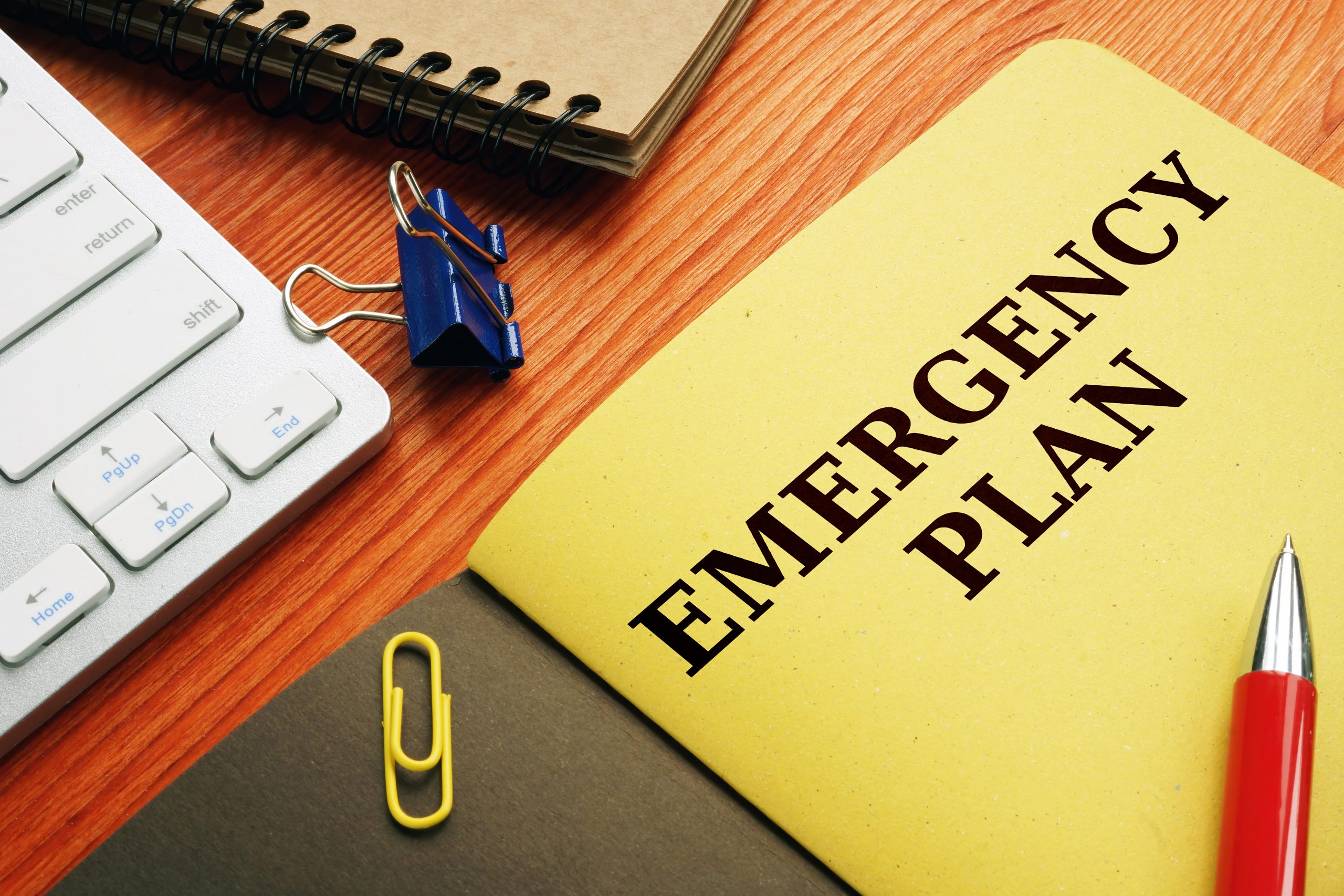Emergencies are unpredictable. They put lives and resources in danger at a moment’s notice. Which is why so much time and effort is used to develop emergency plans in the workplace. Proper planning is the buffer that mitigates the impact of emergencies, saves lives and resources, and keeps organizations prepared.
Employees are familiar with the defined routines and roles of their organization’s emergency plans. These plans are rehearsed and tested regularly to ensure their efficient roll-out should the worst happen. Regular practice ingrains the steps of an emergency plan as muscle memory for employees to draw on during an emergency.
But these plans rarely appear outside the workplace. Even employees with the best intentions have a hard time following through to set up a plan and acquire the necessary materials for an at-home emergency plan. Some don’t even know where to start.
Taking the time to set up and test an at-home emergency plan is essential for ensuring the safety of family members when faced with an emergency or disaster. Follow these tips to develop, resource, and test an emergency home action plan to be prepared for the unexpected.
Know What You’re Planning For
A single plan won’t cover every potential emergency or disaster that could happen. But a basic plan that can be modified for the most likely emergencies provides the best coverage without going overboard. Every emergency plan should include an escape plan, a shelter plan, clear roles for each family member, an emergency kit and where it is located, and emergency contact information.
Discuss the most likely emergency events that can affect a home and the family members within the household. These include fires, carbon monoxide and gas leaks, medical emergencies, floods, local natural disasters, etc. Defining each event helps determine what kind of action needs to be taken for immediate safety. Should the family evacuate or shelter in place? Should someone call for help now or wait until they’re in a safe space? What should be retrieved from the emergency kit to provide immediate help? These all depend on what emergency is happening.
Stock An Emergency Kit
A well-stocked emergency kit is vital for staying prepared. It should be light enough to be easily carried and moved with supplies that are essential for survival and safety. The CDC recommends the following items for every emergency kit:
- An emergency water supply — usually one gallon of water per person.
- An emergency food supply — non-perishable and easy-to-prep food stuffs with enough items to feed every member for at least 72 hours.
- Prescription medications
- Necessary medical devices — blood sugar monitors, spare glasses or contacts, inhalers, epinephrine injectors in case of allergic reactions, spare batteries for hearing aids, and assistive devices such as walkers or wheelchairs.
- First-Aid supplies — bandages, gauze, non-latex gloves, antibiotic creams or ointments, burn creams or ointments, a thermometer that is easy to read, and a first-aid reference manual.
- Child care supplies — in addition to the food supply above, ensure there is spare infant formula (as necessary), diapers, wipes, a portable crib, copies of each child’s medical records, children’s prescription medications, and copies of their primary health care provider’s information.
- Pet care supplies — family pets should be accounted for as well. Include extra pet food, a spare leash or carrier, pet medications, their most recent medical and vaccination records, and microchip information.
Make it Personal
The home emergency action plan should be specific to that household. This also means that the plan should be updated in the event of any major life change. Escape plans need to be specific to each location and detail the primary exit points, windows, rooms, fastest routes, and nearby emergency meeting locations. Make sure the emergency meeting location is specific and visible so that it is easy to remember.
This is also pertinent for shelter plans. Mapping out each room determines which spots are safe to take shelter during natural disasters such as tornadoes or hurricanes. It also determines the best location to keep the emergency kit. The kit should be in a spot that any able member of the family can access and move the kit without obstruction or hesitation.
Delegate Roles and Run Trials
Every member of a household has a role they can play. Just getting to safety and knowing the escape plan is a role unto itself. But it’s important to delegate who is grabbing an emergency kit, who is contacting emergency services via 911, who is doing a headcount at the emergency meeting spot, and who is in charge overall. Clearly defining roles makes each member of the household feel responsible for part of the plan.
But a plan only works if everyone knows how to perform it. Schedule regular tests and dry runs every 6 months to keep the plan steps fresh in everyone’s memory. This helps everyone feel how the plan actually takes place in real-time. It also determines who may need to take on a different role or which parts of the plan need to be updated over time.
Creating a home emergency action plan is essentially creating a personalized culture of safety. It replaces fear and uncertainty with direction and action in the face of a crisis. Stay primed and ensure the safety of your household by crafting, rehearsing, and updating a home action plan regularly. And consult with the safety professionals at Optimum Safety Management for further tips and guides to stay safe — on-site, on the job, and at home.
Optimum Safety Management provides the information and services to help companies develop safety leaders and improve overall safety performance. For more information on how Optimum Safety Management can assist with your businesses’ safety needs, contact an expert today, or reach out via phone at 630-759-9908.
Continue reading safety blogs for more safety tips and insights








